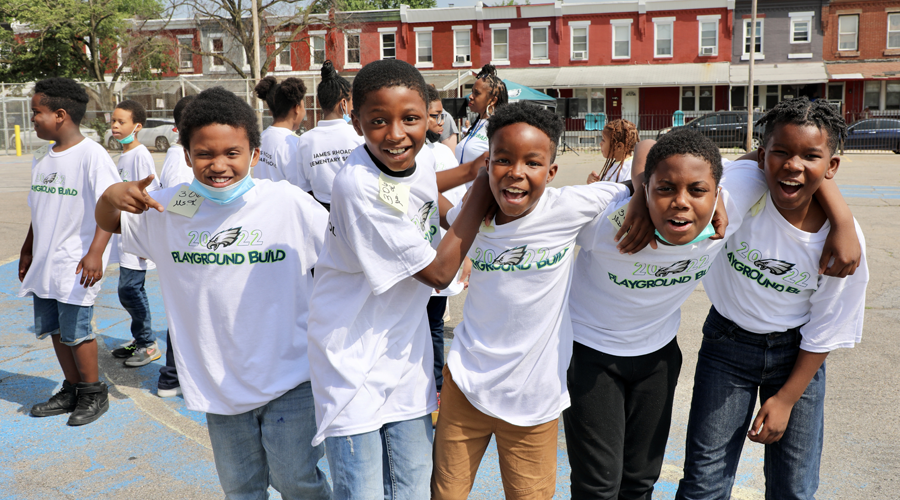
Featured strategy project
Think back to your most memorable school experiences. Was it an after-school club that ignited a passion you still chase today? Maybe it was the thrill of competing for a championship with your teammates, or the rush of performing on stage—whether playing an instrument, acting in a play, or singing in the choir. These moments remind us just how powerful enrichment programs are, shaping not just our school years, but our lives long after we graduate.
Our team worked closely with the School District of Philadelphia’s (SDP) Office of Strategic Partnerships to develop a theory of change for the District’s Enrichment Programming. This process was highly collaborative, involving district staff, students, and external partners to ensure that we included diverse perspectives.
The Vision & Process Behind The Theory of Change
The goals of this theory of change were to 1) develop a common language around enrichment programming 2) define and clarify what success looks like for enrichment programming 3) provide guidance and expectations around enrichment programming to external partners and vendors 4) increase internal collaboration opportunities for district offices.
This theory of change serves as both a "north star" and a roadmap. It shows how enrichment programs positively impact the lives of students across the district through opportunities to explore interests beyond the classroom, build essential skills, and find a sense of joy, community, and fulfillment.
The development of this theory of change was rooted in a collaborative, stakeholder-driven approach. This process ensured that the final framework was shaped by the voices of those most impacted by enrichment activities — students, staff, and partners. To accomplish this, the project team worked closely with four key stakeholder groups: the Project Core Team, Enrichment Partners, District Staff, and Students. Each group played a critical role in providing feedback and helping guide the project from start to finish.
High Quality Enrichment Programming
So, what does high-quality enrichment programming look like? Through our process, we were able to identify the key elements of successful enrichment programs. Most enrichment activities are successful when they maintain clear expectations for student growth, align with student interests, and regularly provide structured opportunities for engagement.
These programs engage students in fun and enjoyable activities and also allow them to take ownership of their learning and reflect on their progress. By doing so, these programs not only build skills but also help students find a sense of pride and accomplishment in their growth.
The Impact of Enrichment Programming on Students
What kind of impact does enrichment programming have on students? Through engagement in these programs, students experience positive outcomes that shape their educational journey and personal growth in both the short and long term. See below for the impact statement that was developed during this process.
School District of Philadelphia Enrichment Impact Statement
Through participation in enrichment programming, each student in the SDP will develop a sense of who they are and what matters to them, improving their overall well-being by helping them find community, joy, and fulfillment.
By fostering three critical pathways, enrichment programs provide students with a transformative experience that helps them navigate school, build lasting relationships, and achieve their life goals.
- Joy. This pathway enhances students’ emotional well-being in both their educational and personal development. We heard from a student that during enrichment programs, “students’ mood about school changes...and they have a more positive attitude.”
- Community. This pathway represents students’ ability to form strong, supportive, and trusting relationships. One student shared that through enrichment programming, students “feel a sense of belonging with people they can trust.”
- Fulfillment. This pathway aligns students’ experiences with their passions and goals. A student shared that enrichment opportunities “help me know the type of person I can become.”
The overarching impact of enrichment programming can be understood through the PERMA framework developed by Dr. Martin Seligman, which emphasizes Positive Emotion, Engagement, Relationships, Meaning, and Accomplishment as the building blocks of wellbeing. This evidence-based approach demonstrates how enrichment programs provide students with not only the immediate joys of learning and engagement but also lifelong tools for happiness and success.
Learn more about the theory of change on the Office of Strategic Partnership's website.



